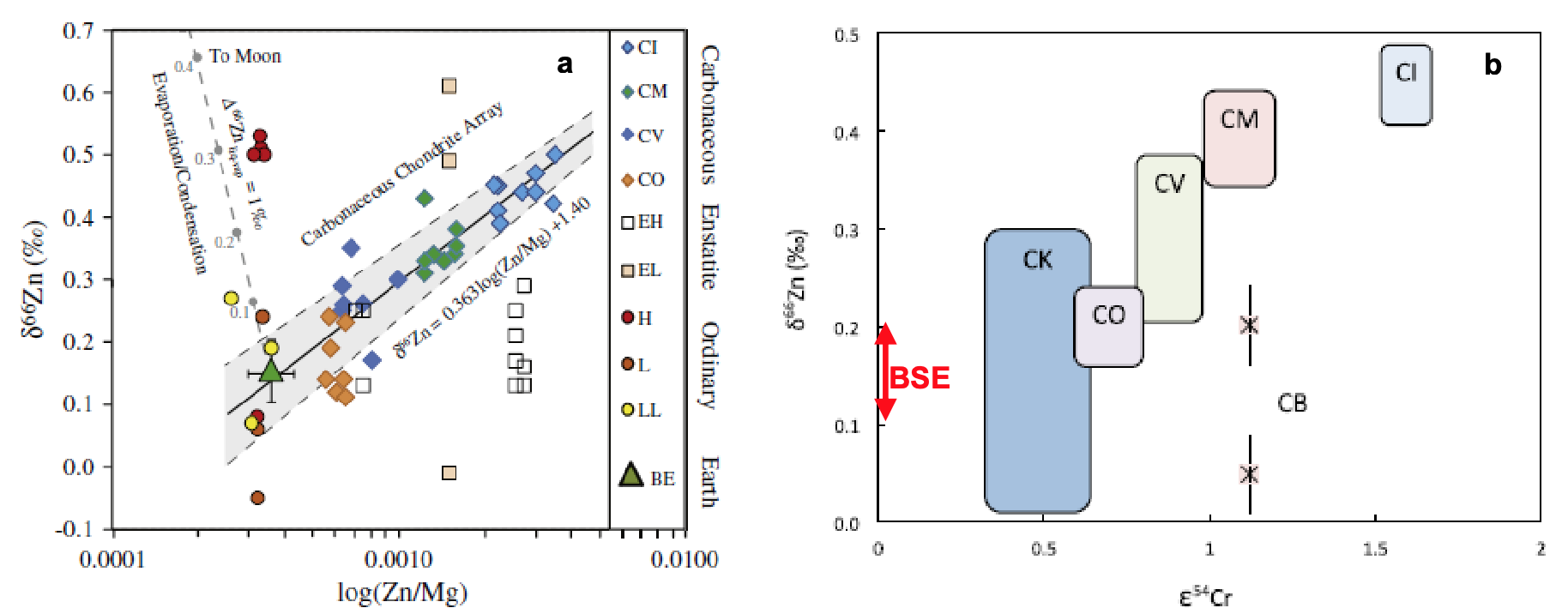Research areas: Cosmochemistry, geochemistry
The Earth and other terrestrial planets are, compared to CI chondrites, variably depleted in volatile elements. Some of these elements display variable mass-dependent stable isotope fractionations in different groups of chondrites, iron meteorites, achondrites and planetary bodies. While one explanation for these differences could be that core formation results in the depletion of siderophile volatile elements in the silicate Earth, this is unlikely because stable isotope fractionation during high-temperature core formation in the early Earth tends to be small or negligible (See TRR 170 subproject B2, 2016-2019). Thus, most of the differences in stable isotope compositions of elements such as Zn, Cu, Sn or Cd in large terrestrial planets may either reflect silicate differentiation (which produces small effects that can be corrected reliably) or volatilization processes. It is unclear, however, when and where in the history of the terrestrial planets these isotopic fractionations and associated volatility-controlled depletions occurred. These volatile element depletions and associated isotopic compositions could have been inherited from undifferentiated building materials similar to chondrites or from differentiated protoplanets, because the compositions of undifferentiated materials likely reflect evaporation and condensation processes in different domains of the solar nebula, and, at least in some cases, local redistribution of vapour during metamorphic heating within the parent bodies. This project will investigate the nature and extent of nebular volatile fractionation processes and their significance for the budget of moderately volatile elements and associated isotope fractionations in the Earth.
We propose to investigate the coupled behaviour of mass-dependent isotope variations of Zn, Cu and K in components of carefully selected carbonaceous chondrites in relation to the bulk silicate Earth composition. The choice of these elements is based on the peculiar stable isotope fractionation behaviour of these elements in bulk rocks of chondrites and in the silicate Earth, they have relatively high abundances in nature, and they show variable depletion. To constrain the origin of mass-dependent stable isotope fractionation of moderately volatile elements observed in nebular materials, we will compare our data to results from mineral-vapour partitioning and isotopic fractionation experiments, which will be conducted as part of project B7. Other volatile fractionation processes, such as extensive degassing from magma oceans on planetesimals (B7) and large-scale and local volatile loss after giant impacts (B1) will be investigated in two related and interlinked projects. Results of this project, in conjunction with B7 and B1, will test models positing that a large fraction of Earth’s volatiles were delivered during the final stages of accretion.

Figure: δ66Zn_LyonJSC in CC groups and BSE as a function of (a) Zn/Mg (Sossi et al., 2018) and variations in (b) ε54Cr (Pringle et al., 2017). The ε54Cr variations reflect differences in the nucleosynthetic mix of presolar components and are characteristic for the different parent bodies. This implies that the broadly correlated δ66Zn variations also reflect mixing prior to accretion of components onto these parent bodies.

